Climbing in the mountains is a beloved activity for many outdoor enthusiasts with the challenge and satisfaction of completing a major hike being a driver. While hiking a local trail is fun and a great way to stay in shape, nothing compares to bagging a higher peak in the Great Outdoors. Mountaineering has its risks and there are a number of destinations around the world that are known for being extremely dangerous. Despite the risk, mountaineers are drawn to these peaks year after year. Whether it’s in spite of or because of these risks, we’ve rounded up a list of the world’s most dangerous mountains to climb.
K2
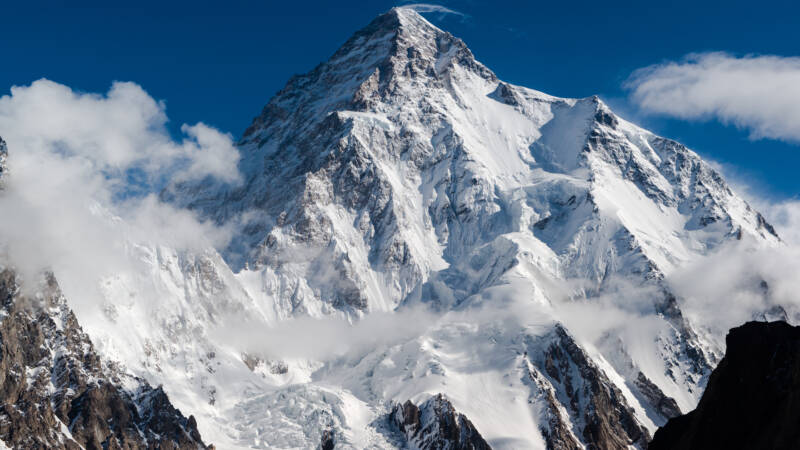
The second highest mountain in the world at 28,251 ft, K2 is located on the Chinese-Pakistan border and is considered to be the most challenging climb. Steep sections of rock face are interwoven with seracs, or ice pillars, which are prone to collapse without warning. K2 is also prone to frequent and severe storms, making a successful ascent difficult. While the mountain has fewer deaths than Everest, 29% of attempts that result in a fatality are much higher. Legend has it that the mountain is cursed for female climbers.
Mt. Everest
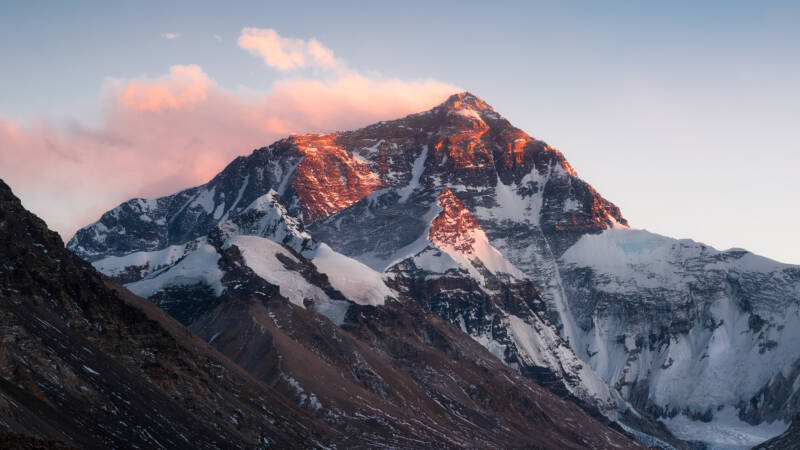
When most people think of dangerous climbs, they think of 29,029 foot high Mount Everest. While it is still a risky climb that one needs to be diligently prepared for, it has been attempted so many times that the dangers of the mountain are well understood. Thin air, avalanches, and 100 miles per hour winds are some of Everest’s most unforgiving aspects. As of 2019, just under 24,000 attempts have been made culminating in 10,050 people who succeeded and 291 who died.
Siula Grande

This Peruvian Andes mountain is completely sheer on both the west and south sides, with a vertical ascent 20,814 feet up. It was not conquered until 1985 in one of the most thrilling climbing stories ever. Simpson and Yates, after reaching the summit via the western face, met with disaster on the way back down when Simpson fell and broke his leg. While Yates tried to help him down with a rope, he lost Simpson over a cliff. Five days later, as Yates was preparing to return home, Simpson hopped into camp on one leg, having survived the 100-foot fall and lived on melted snow.
Kanchenjunga

Straddling the border between India and Nepal, this mountain is known for its incredible views up at 28,169 feet. The bitterly cold weather and unpredictable weather and avalanches make this one of the most dangerous rock climbs in the world. It’s also the third highest mountain in the world and thin air and altitude sickness add extra challenges. Since the 1990s, upwards of 20% of attempts have resulted in fatalities while climbing Kanchenjunga’s main peak. Interestingly, most deaths occur on the descent with common reasons including high-altitude cerebral edema, falling ice, and high-altitude pulmonary edema.
The Matterhorn
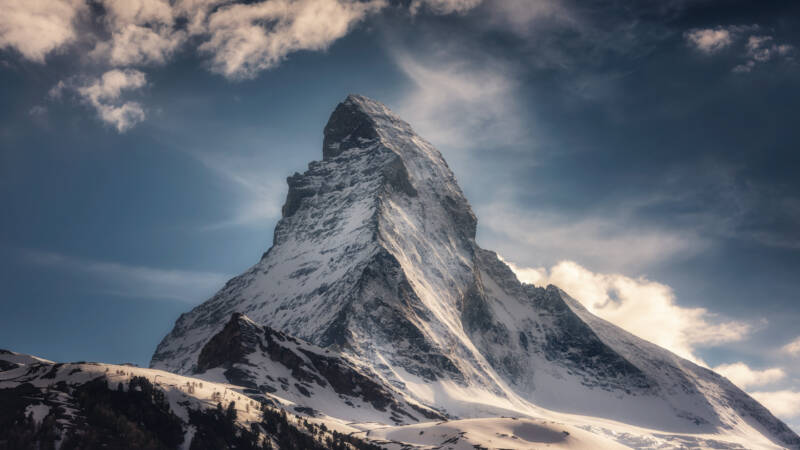
This 14,692-foot mountain, the most famous in the Alps and one of the hardest climbs, gets its name because it looks like a giant horn towering above the landscape. The technical difficulty of the climb is made worse by regular avalanches and rockfalls and it has one of the highest fatality rates in the Alps. The popularity of the Matterhorn also means that climbing routes can become dangerously overcrowded with eager alpinists.
Annapurna
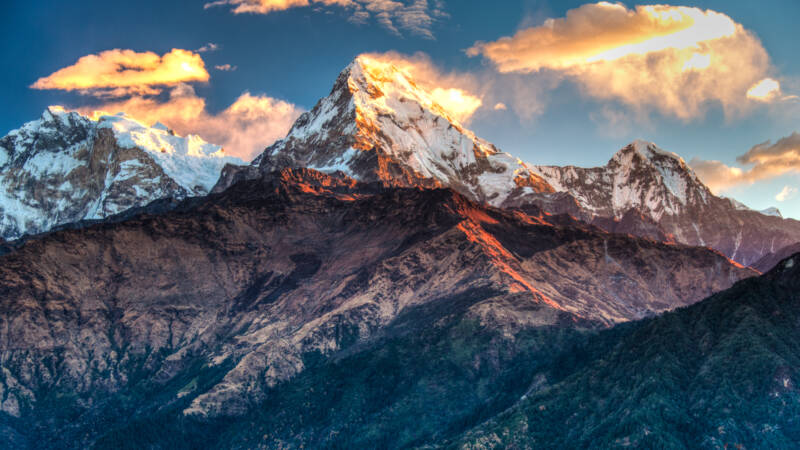
This massif – located in the Himalayas in north-central Nepal – is the 10th highest mountain in the world at 26,000 feet. It’s one of the Eight-Thousanders, 14 peaks in Asia that are more than 26,247 feet above sea level that is recognized by the International Mountaineering and Climbing Federation. It’s also one of the deadliest; 32% of those who have attempted the trek have died in the attempt – the highest fatality rate of any mountain in the world. This is due in part to being incredibly prone to avalanches, which only adds to the otherwise technical difficulty of the climb.
Mt. Washington

This image photographed and edited by Elizabeth Marie / Getty Images
Few people think of the White Mountains in the eastern United States as particularly dangerous. However, they are home to the ninth most dangerous climb in the world. Although the mountain does not count amongst the tallest in the world, and none of its faces are truly vertical, it does have treacherous and difficult rocky terrain. What makes the climb truly dangerous, though, is the weather. Something strange about the air currents around the mountain makes it home to regular hurricane-force winds. The strongest wind ever recorded on Earth, 231 mph, was measured on this mountain. Ice pellets rain from the sky even in the summer, and storms can form almost without warning. The mountain has claimed 161 known lives, and local folklore says that it is both haunted and cursed.
El Capitan

Standing more than 3,000 feet tall, the sheer vertical cliff face of El Capitan is without a doubt the most challenging rock climb in the world, and it’s true rock climbing – a sport much different than hiking. Located in Yosemite National Park, even the most experienced climbers using ropes and pitons generally take four or five days to reach the top, and they have to sleep in hammocks hung from pitons in the cliff face. Those looking for the ultimate challenge ascend the cliff with nothing more than their hands and feet – a sport called free solo climbing.
Eiger
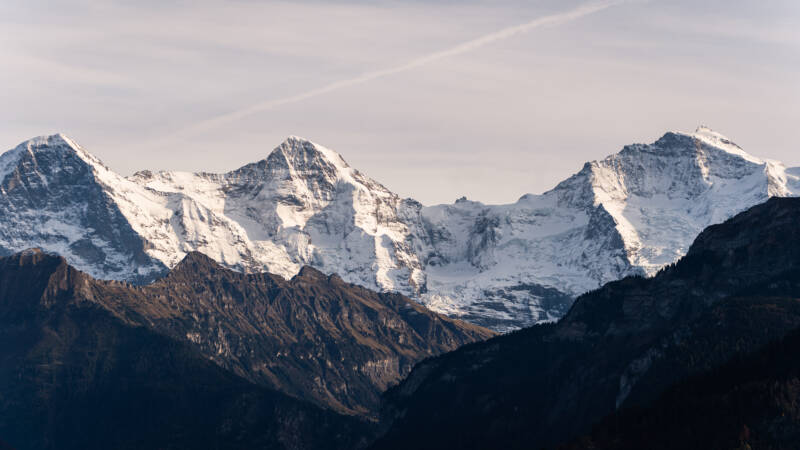
The northern face of this 13,015-foot Alpine mountain has a name that says it all: the Murder Wall. Not only is it a difficult and challenging climb, but heavy rock also falls regularly scour this face of the mountain clean of anything, and anyone, on it. At least 65 people have died on the mountain since the 1930s when its notoriety was sealed when 8 men were killed on the peak before the first successful ascent in 1938.
Gangkhar Puensum
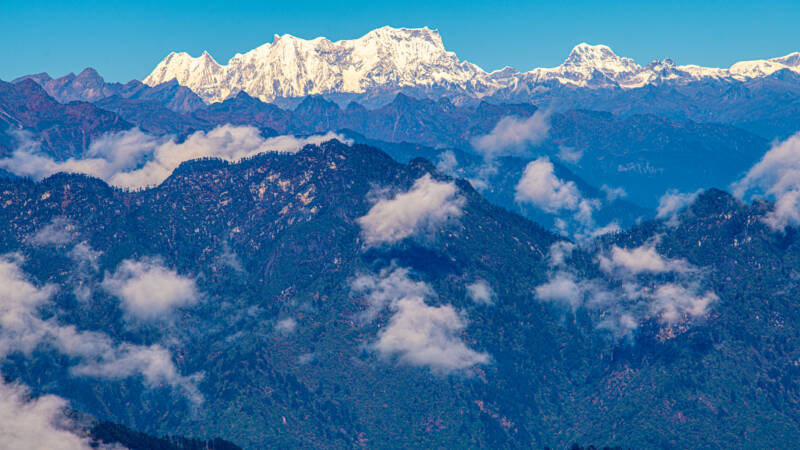
Located in Bhutan on the border of Tibet sits the highest climbed mountain that has never been climbed. Bhutan opened for mountaineering in 1983, but in 1994 climbing mountains higher than 20,000 feet become prohibited for respect for local spiritual beliefs. Given that Gangkhar Puensum sits at 24,840 feet and no one summited between 1983 and 1994, it’s one of the most well known un-summited peaks.









